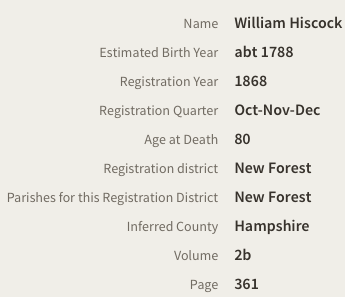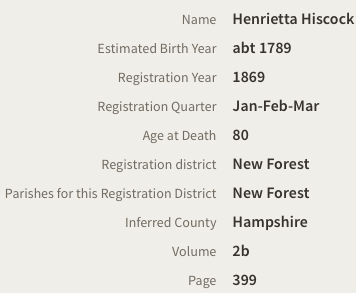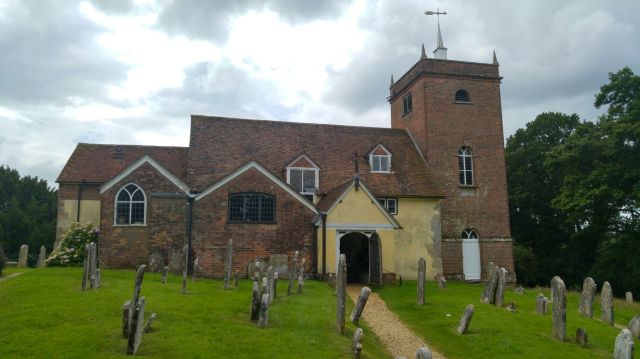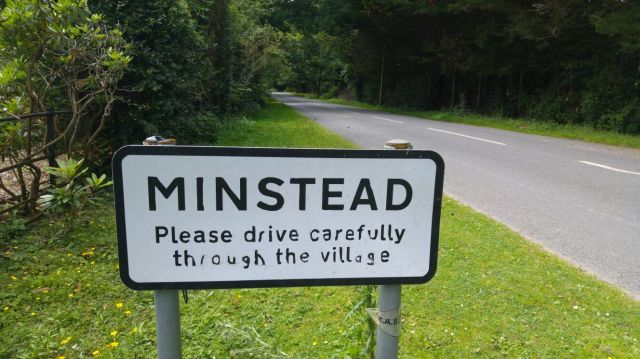Why did I start to research my family history? This is a question I have been asked many times. Researching my family tree and finding out where I came from is something I had wanted to do for a number of years, but for some reason, I had put it off.
I suppose my reasoning behind this was that I didn’t have the time, as my son had been born with a disability, and was in and out of hospital , having had lots of operations. Another reason, and I’m sure it’s the same for a lot of people out there, is that I didn’t know where to start, and initially, I didn’t know anyone who was doing this.
I had been watching all of the family history programmes on television and kept thinking that this was something that I would like to do. I was always wondering about who my ancestors were and where I came from. Was there anyone famous in my tree; was I related to royalty, and were there any skeletons in the closet?

Another reason for wanting to research my family tree was that my maiden name is the same as my married name. At the time, I didn’t think that Hiscock was a very common name. I knew a few people at school with the Hiscock surname, but I just thought that it was a regional name. When I mentioned to people that I was a Hiscock before I got married, I was always asked whether we were related. This got me thinking, and I felt that I had to find out. Another reason for beginning my research was finding out that both mine and my husband’s Hiscock grandparents lived in the same road, and our parents, aunties and uncles all went to the same secondary school when they were growing up.
When I was young, we always spent a lot of time seeing my paternal grandparents and the rest of our extended family. I always enjoyed it when my nan got out her big box full of photos, and we always looked through them. There were loads of black and white photos in all different sizes, and I loved to hear who these people were and how they were related to me.

Great, Great Auntie Anne & Great, Great Auntie Hilda Cole
I’m lucky enough that my nan is still alive, and so, a little while a go, I went and visited her to have a look through the photos again. I’ve carried out quite a lot of research on my paternal line, and the names have become very familiar to me over the years. I always wondered what they were like as people and also what they looked like. I showed my research to my nan, and she was able to give me some old photos to scan, and I was finally able to put names to faces. It made the people seem even more real. Nan was able to tell me what some of the people were like as she had met quite a few of them over the years. It was really fascinating.
Finally, six and a half years ago in January 2010, I decided that the time was right for me to begin my journey of finding out who I really am.
My mother had started her family tree six months previously, so she was able to help me on my way. As she was using http://www.ancestry.co.uk this was the route that I decided to take, so I immediately signed up for the 14 day free trial, careful to uncheck the renewal box. I decided that I was going to go for the Pay-As-You-Go option, after all, this was just a hobby, there was no need for me to take out a subscription was there? It wasn’t long before that changed, and I was totally hooked. Overtime, I have gradually increased my membership, and I am now using the Worldwide subscription, which gives me full access to their records.
Of course, you don’t need to use Ancestry, there are plenty of other family history websites out there. FindMyPast is just as good. I’ve found plenty of records on there that I haven’t managed to find on Ancestry. There are also free websites that you can use. FamilySearch is a very good website to use. You have access to vast amounts of records and you can also build your tree on there as well. A lot of people use various family tree programmes. Family Tree Maker is a good one to use and you can syncronise it with your tree on Ancestry. Using a family tree programme may be something to think about using once you are more familiar and settled with your research.
If you’re new to family history, and you want to make a start in researching your tree, make sure that you are able to speak to as many people as possible in your family. Try and get as much information as possible. Remember to not take anything as gospel, always try to back up any information that you have been given. Stories can change over the years and you don’t want to be sent on a wild goose chase.
I began by putting in my details on Ancestry, and then my parents’ details. It wasn’t long before I was getting the green, shaky ancestry leaves telling me there was a possible match in my tree. These hints are not guarantees that they are the right records for your ancestor. Names and dates may be very similar, so go careful before you add that piece of information. Always double check using more than one website. It was so easy to get carried away, and literally spend hours in the evenings finding out about all these wonderful ancestors.
At the beginning, it was all trial and error because I was self taught. I was finding my own way, and it was so easy to lose direction and add the wrong people. There was no organisation to my research, and it was just a random scribbled note on a scrap of paper, so it was inevitable that I ended up having the wrong people in my tree. I would even attach other people’s trees to my own because they had similar information. Most of the time, when I looked at their trees, a lot of the information that they had was not sourced, so I had no idea how they had found the information.
Eventually, I found my own routine, so I typed up my own family group sheets to give me some structure. This helped me to organise my research and to find the correct ancestors for my tree. I was still missing information at this early stage as I was only using Ancestry.
A few months after starting my family tree, I decided to start researching my husband’s. I began with his maternal line as my husband’s aunt had a lot of information to help me on my way. She had the names and dates of birth for her parents, siblings, aunts, uncles and grandparents. This time around, I was a lot more organised with my research, and typed out family group sheets each time I had researched a family. Not only was I searching in Ancestry, but I was using FindMyPast as well to find records. Below is my own family group sheet that I use for each of the families that I research:
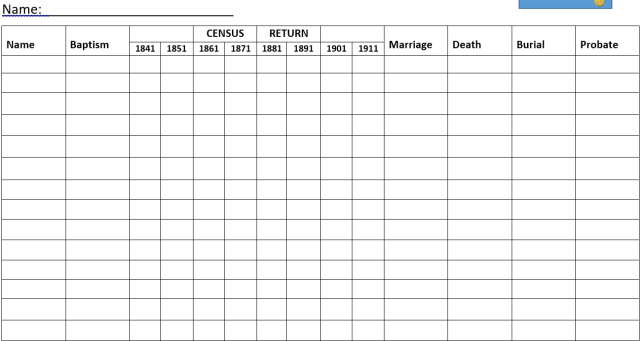
This table provides me with some structure as to what I have found so far, and what is left to find.
In late 2010, a very sad event occurred in my husband’s family. My father-in-law died suddenly and unexpectedly. I was at the wake talking to my father-in-law’s cousin about researching family trees. He had a lot of information regarding my husband’s grandmother’s family, along with photos. He promised to email them to us so that I could start researching that side of the tree. Not long after that, my research began on the paternal side of his tree. Below is a photo of my husband’s great grandfather, born in 1873:
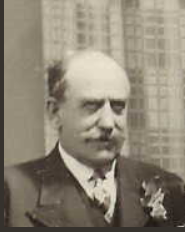
Sidney Godwin
The more I researched both trees, the more experience I gained, the better the information in the trees. I found that reading the various different family history magazines can also prove to be a big help. The more knowledge that I have gained over the years has meant that I have been able to go through each family tree again, making sure that I have all of the correct information. I’ve even managed to add new bits of information about each person.
Researching mine and my husband’s family trees has been one of the most rewarding things I have ever done. I have found out so much and learnt so many new things. With family history, you are always learning. Whilst there is plenty of information to be found online, don’t forget that local and county record offices are always a valuable source of information. You can look at original documentation, with some of them being hundreds of years old. You can also join Family History Societies; I am a member of quite a few and have found them really helpful. Go to as many family history meetings as you can, as you will always find help there. If you are on Facebook, a lot of the family history societies have their own pages. I’ve joined quite a few and they have been very helpful with breaking down brick walls in my research. They also have a lot of local knowledge in their respectful areas.
There are quite a few companies that run genealogy courses online. If you sign up with FutureLearn, you can take part in a Massive Open Online Course (MOOC) called Genealogy: Researching Your Family Tree. This is a free online course that runs for six weeks. This course is aimed at all levels of experience. It benefits beginners as it sets them up on the right path for their family research and won’t lead to bad habits. It’s also beneficial for the intermediate and advanced researcher. You can also learn a lot from other people too.
Pharos Tutors is another company that runs courses; these are purely genealogy courses that are affordable for the everyday person. They cover all sorts of topics, for example, Scottish research online; The Poor, The Parish and the Workhouse. There are universities, for example, Strathclyde who do genealogy degrees. They do cost quite a bit to do, and at the time of writing this, I am in the process of saving up to do a genealogy degree.
So far, this year (2016), I have completed the genealogy MOOC (see above), and I would definitely recommend it. It changed the way in which I do my research and has made me a lot more organised. I have designed research logs for each person so that I know which websites I have used.
I use research logs for each person so that I know which records I have and which ones are outstanding. I also print out each record and keep them all in binders so that, not only do I have an electronic copy, but I also have a hard copy as well.
For the past six years, I have been going to Who Do You Think You Are Live. You can meet up with all sorts of people who are researching their family history. There are lots of different lectures for different areas of family history, and you can learn a lot by attending these. I’m already looking forward to the next one. Over the past few years, I have purchased family history charts and Parish baptisms, marriages and burials CD roms, and family history books. I have got an excellent collection of resources available to assist me with my research.
I have managed to research back quite a few generations, and have collected various documentation along the way to support my research. Whilst my research is nowhere near complete, and I would assume that it won’t be due to the different records continually coming online, I thought I would share with you what I have so far and introduce you to the wonderful people I have found along the way. I will be sharing each couple/person with you in different blogs, but I will be placing everything that I share with you into a family history book which I am hoping to have published in full to place in my local library. The book will be divided into four sections, with the first two sections showing my paternal side of the family. Section one will be about the Hiscock line. Within my research, I have included photos, birth, marriage and death certificates, as well as census returns, parish records and any newspaper articles that may be available. I hope you enjoy reading about these people as much as I have researched them.






 James Hinvest passed away on the 21st December 1882 at the New Forest Union Workhouse, Eling Road, Hampshire. The cause of death was old age; James was 87 years of age. The informant of his death was a man called William Taylor, who was the Master of New Forest Union Workhouse, Eling. James’ father, James, was also a resident of this workhouse in the 1850s. Below is a copy of James’ death certificate:
James Hinvest passed away on the 21st December 1882 at the New Forest Union Workhouse, Eling Road, Hampshire. The cause of death was old age; James was 87 years of age. The informant of his death was a man called William Taylor, who was the Master of New Forest Union Workhouse, Eling. James’ father, James, was also a resident of this workhouse in the 1850s. Below is a copy of James’ death certificate:







